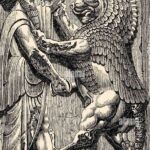Selecting the correct angle to sharpen your knives is just as crucial as choosing the right sharpening stone. Understanding and choosing the right angle is one of the foundational steps to achieving a razor-sharp edge. While a 20-degree bevel angle is often recommended as a versatile starting point for general knife sharpening, optimizing this angle can significantly enhance your knife’s performance for specific tasks.
The decision behind choosing a knife sharpening angle boils down to a balance between sharpness and durability. A lower angle results in a sharper edge, allowing for effortless cutting. However, this finer edge becomes more delicate and prone to chipping or damage. Conversely, a higher angle provides a more robust edge, capable of withstanding tougher use, but may not be as acutely sharp.
Why Opt for a Lower Sharpening Angle?
Sharpening your knife at a lower angle drastically improves its cutting efficiency. A blade with a shallower angle glides through materials with minimal resistance, making it ideal for tasks requiring precision and finesse. Knives used primarily for slicing soft foods or those not subjected to heavy impact are excellent candidates for lower angle sharpening, typically considered to be anything below 20 degrees. This is because the thinner profile of the edge requires less force to initiate and maintain a cut.
The Advantages of a Higher Sharpening Angle
Durability is the primary benefit of sharpening at a higher angle. A knife’s edge resilience is determined by its steel composition, heat treatment, and crucially, the sharpening angle. While steel and heat treatment are manufacturer-controlled factors, the sharpening angle is something you can adjust to enhance edge strength. For knives used in demanding tasks like splitting wood or heavy-duty cutting, a higher angle is essential to prevent edge damage. A common sign of using too low an angle for tough tasks is edge rolling, which feels similar to a burr. If you experience this, increasing your sharpening angle can significantly prolong edge sharpness and prevent premature dulling.
Ultimately, the ideal sharpening angle is a matter of personal preference and depends heavily on how you use your knife. The following chart offers a practical starting point for various knives and bladed tools. Remember, you can always fine-tune these recommendations based on your specific needs and cutting tasks by slightly adjusting the angle higher or lower.
Recommended Knife Sharpening Angles Chart
| Type of Knife or Tool | Recommended Angle |
|---|---|
| – Cleavers – Machetes | 25 – 30 Degrees |
| – Hunting Knives – Pocket Knives – Survival Knives – Sport Knives | 22 – 25 Degrees |
| – Chef’s Knives – Kitchen Knives – Utility Knives – Boning Knives – Carving Knives | 17 – 22 Degrees |
| – Fillet Knives – Paring Knives – Sushi Knives – Precision Japanese Knives | 12 – 17 Degrees |
| – Straight Razors – Razor Blades – X-Acto Knives – Scalpels | 7 to 12 Degrees |
(Alt: Assortment of sharpening stones for knives, ranging in grit and material, used for achieving different levels of sharpness.)
We offer a comprehensive selection of sharpening stones, guided knife sharpeners, and electric knife sharpeners designed to help you achieve and maintain your preferred sharpening angle. If you need assistance in choosing the right sharpening tools or have further questions about sharpening angles, please don’t hesitate to contact our sharpening experts for personalized guidance.
